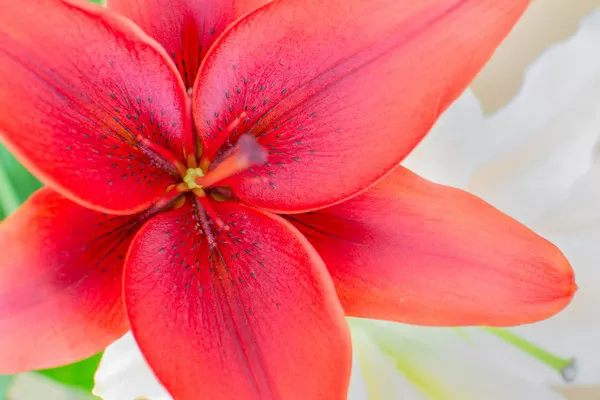Canna lilies are known for their large, broad leaves and showy flower spikes that come in a variety of colors ranging from fiery reds and oranges to soft yellows and pinks. They thrive in warm climates and are often used as focal points in gardens due to their tropical appearance. Gardeners often expect prolific flowering from canna lilies, and when they fail to bloom, it can be disappointing. This article aims to explore the reasons why canna lilies may not flower as expected and provide practical solutions to encourage blooming.
Environmental Factors
Light Requirements
One of the primary reasons canna lilies may not flower is inadequate sunlight. Canna lilies require full sun to bloom profusely. Insufficient sunlight can lead to sparse or no flowers. In regions with hot summers, some afternoon shade might be beneficial to prevent scorching of the leaves, but generally, canna lilies should receive at least 6-8 hours of direct sunlight daily.
Temperature Extremes
Temperature extremes, both cold and heat, can adversely affect flowering in canna lilies. These plants thrive in warm temperatures and are sensitive to frost. Cold snaps in early spring or late autumn can damage emerging flower buds or delay flowering. Similarly, excessive heat, especially without adequate moisture, can stress the plants and prevent them from blooming.
Soil Conditions
Canna lilies prefer well-draining, fertile soil rich in organic matter. Poor soil conditions, such as heavy clay that retains too much water or sandy soil that drains too quickly, can impact flowering. Additionally, soil pH outside the optimal range of 6.0 to 6.5 may limit nutrient availability, further affecting flower production.
Cultural Practices
Planting Depth
Improper planting depth is a common mistake that can prevent canna lilies from flowering. These plants should be planted with their rhizomes just below the soil surface—too deep, and they may not produce flowers. Conversely, planting them too shallow can expose the rhizomes to drying out or damage.
Crowding and Spacing
Overcrowding can also inhibit flowering in canna lilies. These plants benefit from adequate airflow around their foliage and roots. When planted too closely together, competition for nutrients and water increases, leading to reduced blooming. Proper spacing, typically 18 to 24 inches apart, allows each plant to thrive and bloom.
Nutrient Deficiencies
Nutrient deficiencies, particularly nitrogen, phosphorus, and potassium, can impact flower production in canna lilies. While these plants are not heavy feeders, they do benefit from regular fertilization during the growing season. A balanced fertilizer formulated for flowering plants or a slow-release fertilizer applied according to package instructions can provide the necessary nutrients for robust blooming.
See Also: Why Does My Dragon Fruit Flower but Yield No Fruit?
Maintenance and Care
Watering Practices
Inconsistent watering practices can stress canna lilies and affect flowering. These plants prefer consistently moist soil but not waterlogged conditions. During dry spells, regular watering is essential to promote flower bud development. Mulching around the plants helps retain soil moisture and regulate soil temperature.
Deadheading and Pruning
Deadheading—removing spent flowers—and pruning can promote continuous blooming in canna lilies. This practice redirects the plant’s energy from seed production back into flower production. However, be cautious not to remove new flower buds inadvertently while deadheading.
Winter Care
In regions with cold winters, proper winter care is crucial for ensuring canna lilies bloom the following season. Before the first frost, cut back the foliage and dig up the rhizomes. Allow them to dry for a few days before storing them in a cool, dry place for the winter. Inspect stored rhizomes periodically for signs of mold or rot and discard any damaged ones.
Pest and Disease Management
Pest Infestations
Pests such as aphids, spider mites, and caterpillars can damage canna lilies, affecting their ability to flower. Regular inspection of the plants for signs of pests and prompt treatment with appropriate insecticides or organic pest control methods can mitigate damage and promote flowering.
Fungal and Bacterial Diseases
Fungal and bacterial diseases, such as leaf spot and root rot, can weaken canna lilies and hinder flowering. Good cultural practices, including proper spacing and watering, can help prevent these diseases. Fungicides or bactericides may be necessary if diseases become problematic.
Conclusion
Canna lilies are resilient plants that can thrive and bloom profusely when provided with optimal growing conditions and proper care. By addressing factors such as light requirements, soil conditions, cultural practices, maintenance, and pest management, gardeners can encourage these plants to produce the spectacular flowers they are known for. Remember, patience and attention to detail are key when troubleshooting why canna lilies are not flowering. With proactive management and a bit of nurturing, these tropical beauties will reward gardeners with stunning blooms year after year.


